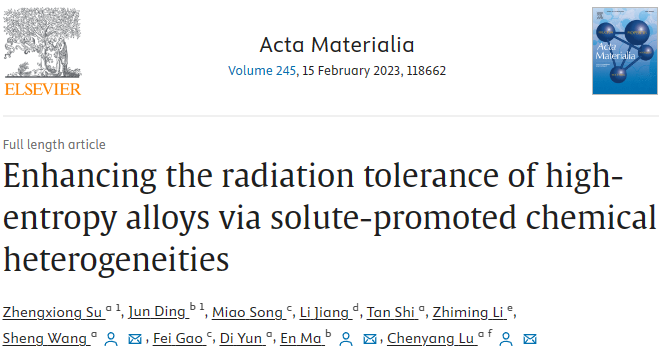
High-entropy alloys (HEAs) composed of multiple principal elements have the potential to offer extraordinary radiation resistance. Using NiCoFeCrMn HEA as a model, here we introduce carbon and nitrogen interstitial alloying solutes to impart additional chemical heterogeneities in the form of local chemical order (LCO) and associated compositional variations. Density functional theory simulations reveal the chemical short-range order (CSRO) surrounding carbon and nitrogen atoms. Atomic-resolution chemical mapping of the elemental distribution confirms marked sub-nanometer-scale compositional variations well beyond statistical fluctuations. Irradiation experiments at elevated temperatures demonstrate a remarkable reduction in void swelling by at least one order of magnitude compared to the base HEA without carbon and nitrogen alloying. The underlying mechanism is that the interstitial-solute-induced chemical heterogeneities roughen the lattice as well as the energy landscape, impeding the movements of, and constraining the path lanes for, the normally fast-moving self-interstitials and their clusters. The irradiation-produced interstitials and vacancies therefore recombine more readily, delaying void formation. Our findings indicate that HEAs can be alloyed with other LCO / fluctuation-provoking interstitial or even substitutional elements, and thus open a promising avenue towards highly radiation-tolerant alloys.
Link:Enhancing the radiation tolerance of high-entropy alloys via solute-promoted chemical heterogeneities - ScienceDirect